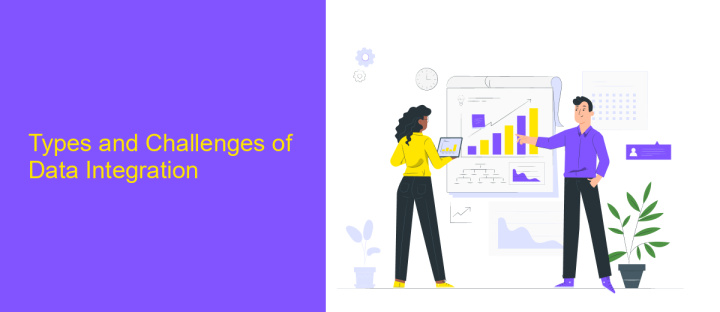Data Integration Advantages Disadvantages
Data integration is a critical process in modern businesses, enabling seamless access and analysis of data from various sources. This article explores the advantages and disadvantages of data integration, shedding light on how it can enhance decision-making and operational efficiency, while also addressing potential challenges such as data quality issues and integration complexity. Understanding these aspects is key to leveraging data integration effectively.
Data Integration Definition and Benefits
Data integration is the process of combining data from different sources to provide a unified view. This practice is essential for businesses that rely on diverse data sets to make informed decisions. By integrating data, organizations can streamline operations, improve data quality, and enhance decision-making processes.
- Improved data accessibility: Centralized data allows for easier access and retrieval.
- Enhanced data quality: Reduces errors and inconsistencies in data.
- Better decision-making: Provides comprehensive insights from integrated data.
- Operational efficiency: Streamlines workflows and reduces redundancy.
- Cost savings: Minimizes the need for multiple data storage solutions.
In summary, data integration offers numerous benefits, including improved accessibility, higher data quality, and enhanced decision-making capabilities. By consolidating data from various sources, organizations can achieve greater efficiency and cost savings, ultimately driving better business outcomes.
Types and Challenges of Data Integration

Data integration encompasses various types, including manual integration, middleware data integration, and data warehousing. Manual integration involves hand-coding and manual data entry, which can be time-consuming and error-prone. Middleware data integration uses software to connect different systems, enabling seamless data flow. Data warehousing consolidates data from multiple sources into a central repository, facilitating easier access and analysis. Each type has its specific use cases and benefits, depending on the organization's needs and existing infrastructure.
However, data integration also presents several challenges. Data quality issues such as inconsistencies and duplicates can arise, complicating the integration process. Scalability is another concern, as the volume of data grows over time. Security and compliance also pose significant risks, especially when integrating sensitive information. Services like ApiX-Drive can help mitigate some of these challenges by providing automated, scalable, and secure integration solutions. ApiX-Drive simplifies the process by offering pre-built connectors and an intuitive interface, reducing the need for extensive manual intervention and ensuring data integrity.
Advantages of Data Integration

Data integration is a crucial process for organizations aiming to streamline their operations and make informed decisions. By consolidating data from various sources, businesses can achieve a unified view, enhancing overall efficiency and productivity.
- Improved Decision-Making: With integrated data, organizations can access comprehensive information, leading to better and faster decision-making processes.
- Enhanced Data Quality: Data integration helps in cleaning and standardizing data, ensuring higher accuracy and consistency across the board.
- Operational Efficiency: By automating data collection and processing, businesses can reduce manual efforts, saving time and resources.
- Customer Insights: Integrated data provides a complete view of customer behaviors and preferences, enabling personalized marketing and improved customer service.
- Regulatory Compliance: Consolidated data helps organizations maintain compliance with industry regulations by providing accurate and up-to-date information.
In summary, data integration offers numerous benefits that can significantly enhance an organization's ability to operate effectively and competitively. By leveraging integrated data, businesses can gain valuable insights, improve operational processes, and maintain regulatory compliance, ultimately driving growth and success.
Disadvantages of Data Integration

While data integration offers numerous benefits, it also comes with its share of disadvantages. One of the primary challenges is the complexity involved in integrating data from various sources. Different data formats, structures, and standards can make the integration process time-consuming and technically demanding.
Another significant drawback is the cost associated with data integration. Implementing and maintaining data integration solutions often require substantial financial investment in software, hardware, and skilled personnel. These costs can be particularly burdensome for small and medium-sized enterprises.
- Data quality issues: Inconsistent or inaccurate data can lead to unreliable results.
- Security risks: Integrating data from multiple sources can increase vulnerability to data breaches.
- Scalability challenges: As data volumes grow, maintaining efficient integration can become difficult.
- Vendor lock-in: Relying on specific integration tools can limit flexibility and adaptability.
Despite these disadvantages, many organizations find that the benefits of data integration outweigh the challenges. However, it is crucial to carefully plan and manage the integration process to mitigate potential risks and ensure successful outcomes.
Best Practices for Implementing Data Integration
Successful data integration requires a clear strategy and thorough planning. Begin by defining your objectives and understanding the data sources you need to integrate. Ensure data quality by cleansing and validating data before integration. Choose the right tools and technologies that align with your requirements, such as ETL (Extract, Transform, Load) tools, data warehouses, and integration platforms like ApiX-Drive, which simplifies the process of connecting various applications and automating workflows without the need for coding.
It's essential to maintain data security and compliance throughout the integration process. Implement robust security measures, including encryption and access controls, to protect sensitive information. Regularly monitor and audit your data integration processes to identify and resolve issues promptly. Additionally, foster collaboration between IT and business teams to ensure that the integrated data meets organizational needs and drives informed decision-making. Continuous improvement and adaptation to new technologies and methodologies will help you stay ahead in the ever-evolving landscape of data integration.
FAQ
What are the main advantages of data integration?
What are some common disadvantages of data integration?
How can data integration improve business operations?
What are the challenges in implementing data integration?
How can businesses automate and manage data integration processes effectively?
Apix-Drive is a universal tool that will quickly streamline any workflow, freeing you from routine and possible financial losses. Try ApiX-Drive in action and see how useful it is for you personally. In the meantime, when you are setting up connections between systems, think about where you are investing your free time, because now you will have much more of it.

